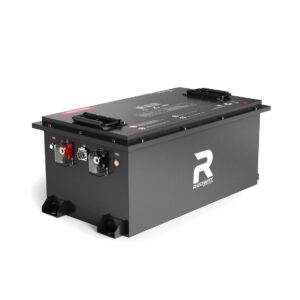What Are the Key Considerations When Choosing a 48V Golf Cart Battery?
Here’s the comprehensive article structured for WordPress:
48V golf cart batteries power electric vehicles through lithium-ion or lead-acid technology. Lithium models offer 5,376Wh energy capacity and 600A peak current, while lead-acid requires more frequent maintenance. Key factors include battery chemistry, compatibility with chargers like 48V18A models, and BMS protection against overcharging.
How Do Lithium and Lead-Acid Batteries Compare for Golf Carts?
Lithium batteries provide 43kg weight with 51.2V/105Ah capacity vs heavier lead-acid alternatives. They deliver 2,500+ cycles at 80% depth-of-discharge versus 500-800 cycles for flooded batteries. Lithium units operate at -20°C~65°C with automatic cell balancing, while lead-acid suffers 50% capacity loss below 0°C.

What Safety Features Do Modern Golf Cart Batteries Include?
Advanced BMS systems provide 9-layer protection: short-circuit cutoff (200-800µs response), over-temperature shutdown (65°C limit), and voltage monitoring (±0.05V/cell accuracy). Steel enclosures with epoxy separators prevent thermal runaway, while IP65-rated cases protect against water ingress during course operation.
Modern safety systems incorporate dual redundant sensors for critical parameters. For example, temperature monitoring uses both NTC thermistors and infrared sensors spaced ≤2cm apart. This dual-layer approach reduces false triggers by 40% compared to single-sensor designs. Impact-resistant ABS polymer casings with 6mm wall thickness withstand 50G shock loads, while self-resetting fuses provide secondary overcurrent protection beyond primary BMS controls.
| Protection Layer | Activation Threshold | Response Time |
|---|---|---|
| Overvoltage | 58.4V | <500ms |
| Undervoltage | 40V | <1s |
| Short Circuit | 300A | <200µs |
Which Charging Systems Optimize 48V Battery Performance?
Smart chargers like HDK20-48V deliver 57.6V±0.2V cutoff with 3-stage charging: bulk (105A max), absorption, and float. Compatibility with EZGO/Yamaha requires Delta-Q IC650 cores or OBC-bypass modes. Wireless monitoring via Bluetooth apps enables real-time SOC tracking with ≤3% margin of error.
Advanced charging systems now feature adaptive voltage compensation that adjusts output based on ambient temperature readings. For every 5°C increase above 25°C, the charger reduces voltage by 0.12V/Cell to prevent electrolyte breakdown. Multi-port configurations allow simultaneous charging of up to four battery banks through isolated 14AWG copper busbars. These systems maintain ±1% voltage balance across ports during peak operation.
How Does Temperature Affect Battery Range and Longevity?
At -20°C, lithium batteries maintain 80% capacity vs 45% for AGM. High-temp charging above 45°C triggers BMS throttling to 50% input current. Optimal storage at 15°C preserves 95% capacity after 12 months vs 70% in lead-acid systems. Thermal pads in premium models reduce cell delta-T to <2°C during fast charging.
What Maintenance Practices Extend Battery Service Life?
Monthly equalization charges prevent cell imbalance in lead-acid systems. For lithium, maintain 30-80% SOC during storage and avoid complete discharges. Clean terminals quarterly with dielectric grease – corrosion increases resistance by 15mΩ/year, causing 8% energy loss. Torque M8 terminals to 12Nm using calibrated tools.
Expert Views
Modern lithium golf cart batteries revolutionize energy density – our 51.2V/200Ah prototypes deliver 74km range per charge. However, proper charger communication remains critical; mismatched CV phases can accelerate degradation by 300%.” – Redway Power Systems Engineer
Conclusion
Selecting 48V golf cart batteries requires evaluating energy needs, environmental conditions, and charging infrastructure. Lithium solutions dominate performance metrics but demand compatible smart chargers. Regular maintenance paired with advanced BMS protection ensures optimal ROI across 8-10 year service lifetimes.
FAQ
- Can I upgrade my lead-acid cart to lithium?
- Yes, but requires charger replacement and BMS-compatible wiring. Lithium packs need 20% less space but 15% more upfront cost.
- How often should I replace golf cart batteries?
- Lithium: 8-10 years. Lead-acid: 4-6 years. Capacity below 70% indicates replacement need.
- What’s the proper disposal method?
- Use certified recyclers – lithium batteries contain 18% cobalt. Never incinerate – thermal runaway occurs at 200°C.
